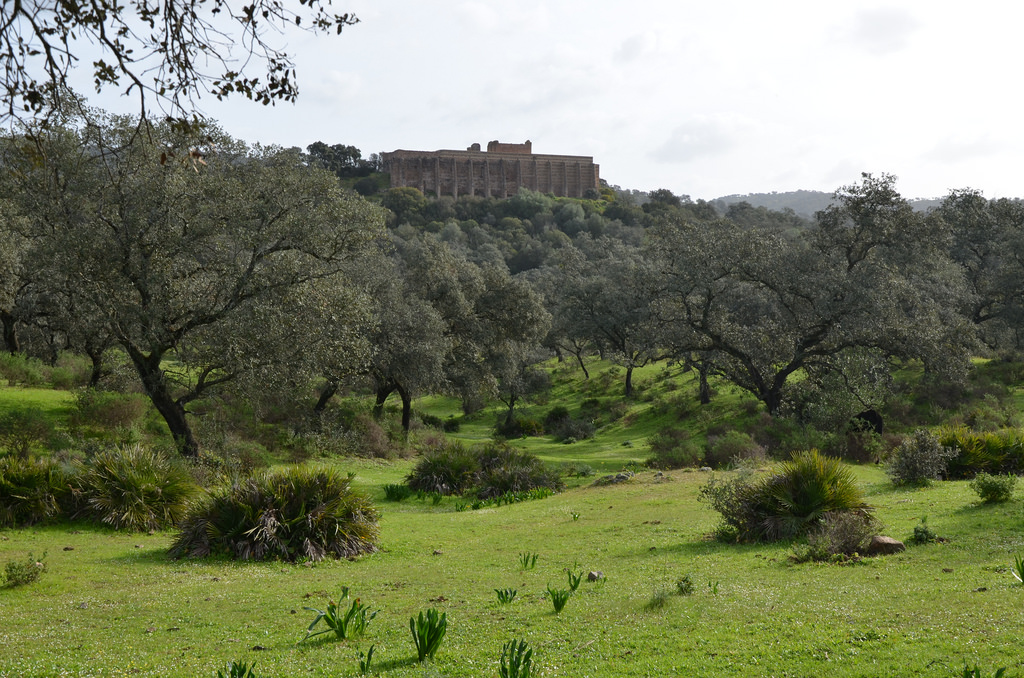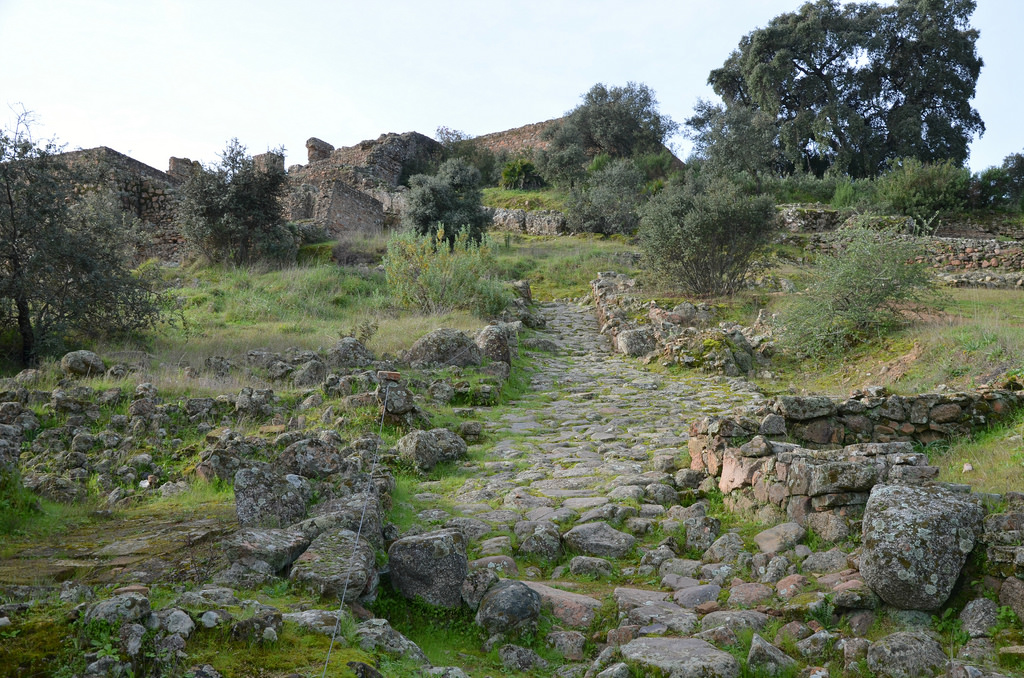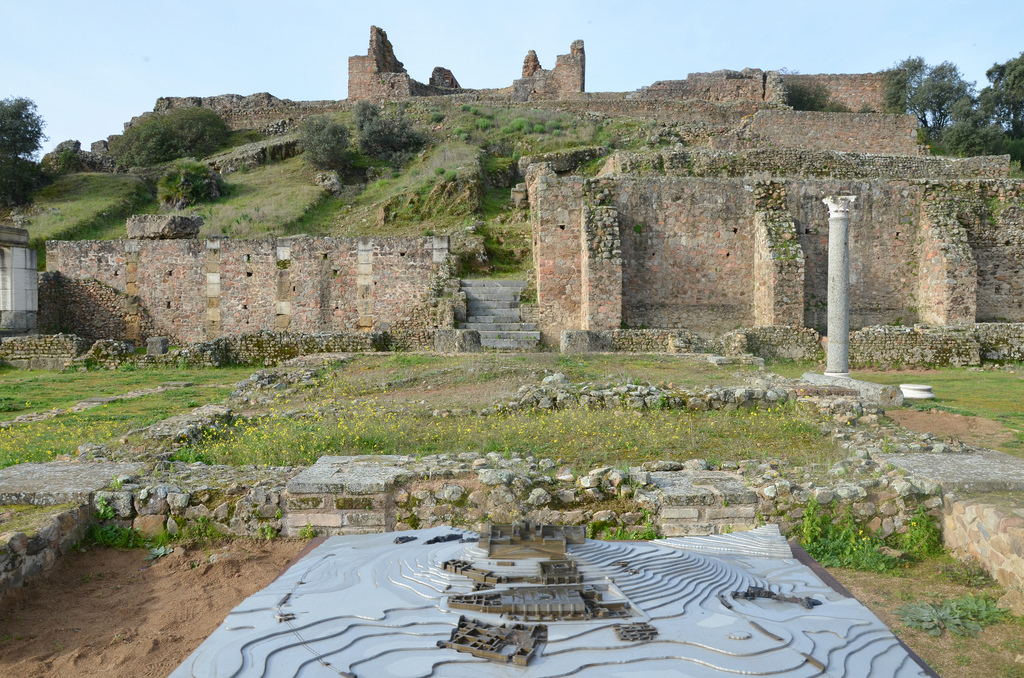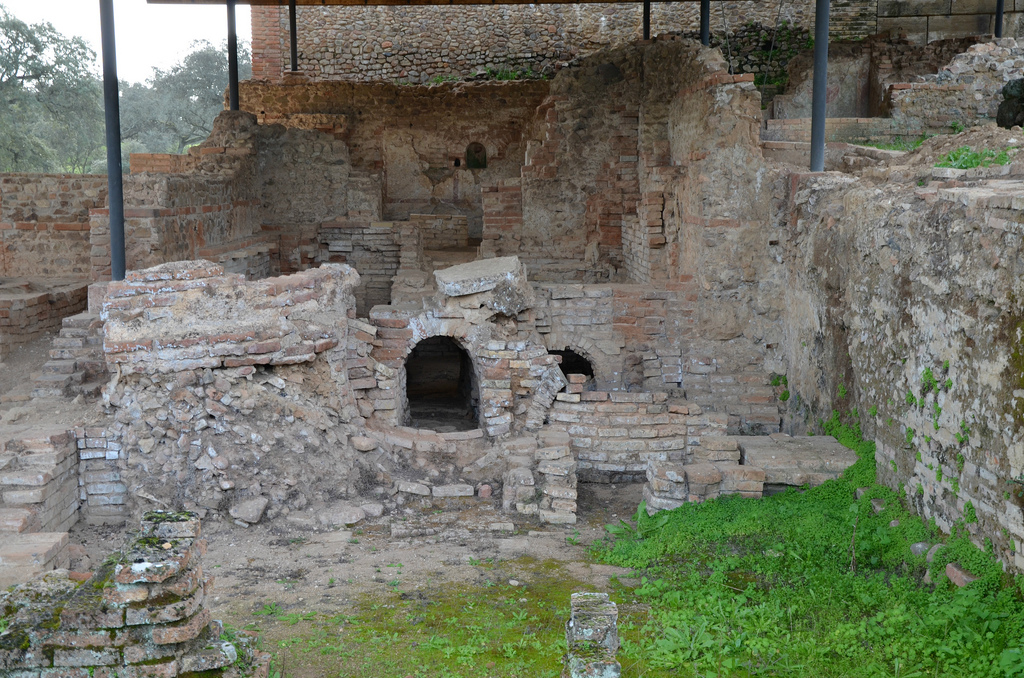Munigua is the site of the Roman city of Municipium Flavium Muniguense, located in the Sierra Morena, 8 km from Villanueva del Río y Minas in the province of Seville. Its origins date back to the pre-Roman period, and evidence of human occupation can be traced back from the mid-4th century BC to the 8th century AD. During the Romanisation of the province of Baetica, Munigua prospered rapidly. It received Latin rights from Emperor Vespasian and was recognised as a municipium, which further strengthened its importance as a centre of commerce, culture, and administration in the region.
Coordinate: 37°42’47.1″N 5°44’25.9″W
The site of Munigua was first discovered by two researchers from the Academy of Letters in Seville in 1765. However, it was later forgotten until 1956, when the German Archaeology Institute in Madrid studied it once again. Archaeologists have discovered many interesting things here, such as temples, sanctuaries, a two-story porticus, residential houses, a forum, public bathhouses, city walls, and a vast necropolis. The site also features a monumental terrace sanctuary on the slope of the hill, known from 18th-century drawings referred to as the “Castle of Mulva”.

According to archaeologists, the settlement in Sierra Morena was founded by the Turdetani, an Iberian tribe who lived in the region. The first settlement owed its existence to the mining and metallurgy activities that have long characterised the Sierra Morena, a mountain range rich in copper and iron ore. During the Roman occupation, copper production increased significantly, and the Romans built elaborately ventilated underground galleries, interconnected tunnels, and deep shafts to facilitate mining activities.
Thanks to the wealth derived from the mines, several monuments were constructed. One of the most remarkable structures was a terraced sanctuary located on the slope of a hill, which dominated the city. The impressive building stood on multiple-tiered terraces and was reinforced by 13 buttresses at the back, giving it the appearance of a fortress. This structure later became known as the Castle of Mulva. The building is characterised by its architectural symmetry, with access ramps and stairs neatly paired on either side of the sacred precinct. The plan seems to have been inspired by the Sanctuary of Fortuna Primigenia at Praeneste or the Temple of Hercules Victor in Tivoli. However, it’s not known which deity was worshipped on the site, though it’s speculated that it may have been Fortuna and Hercules.
The city developed at the feet of the terraced sanctuary. Construction work was accelerated when Vespasian granted Munigua the Latin right around AD 73/74, elevating its status to municipium. Between the mid-1st century and the late 2nd century AD, all the town’s structures, including the forum, the baths, and the houses, were constructed.
Munigua flourished during the reign of Hadrian, but its prosperity declined towards the end of the 3rd century AD due to an earthquake that struck the town. Later, another earthquake during the late antiquity period marked the end of Munigua’s golden era. However, it is known that the site was continuously inhabited, at least until the Almohad period in the 12th century.
The town has yielded numerous archaeological artefacts: some 45 stone sculptures and approximately 160 terracotta pieces. Additionally, a significant number of glass objects have been found in funerary contexts, along with almost 1,500 metal artefacts and various items of jewellery. Over 80 inscriptions have been uncovered at Munigua, including two made of bronze, a tessera hospitalis (which was a hospitality token), and a letter from Emperor Titus.
PORTFOLIO
















Links:


Wonderful photos. I am new to “Following Hadrian”. Does a map of Maniguense exist? Thanks.
LikeLike
Beautiful, hidden and magical place in the south of Spain of an ancient Roman mining town.
LikeLike